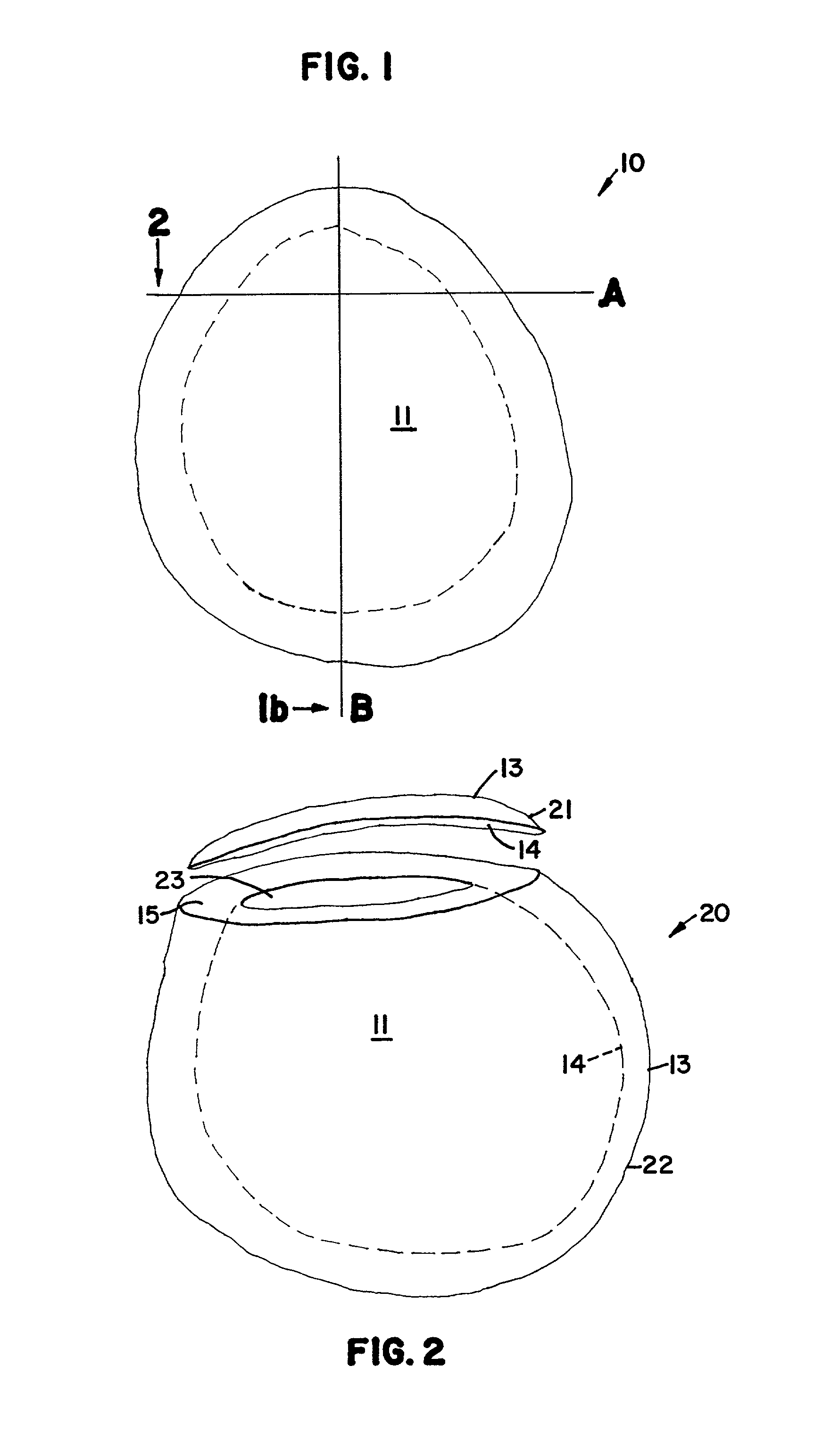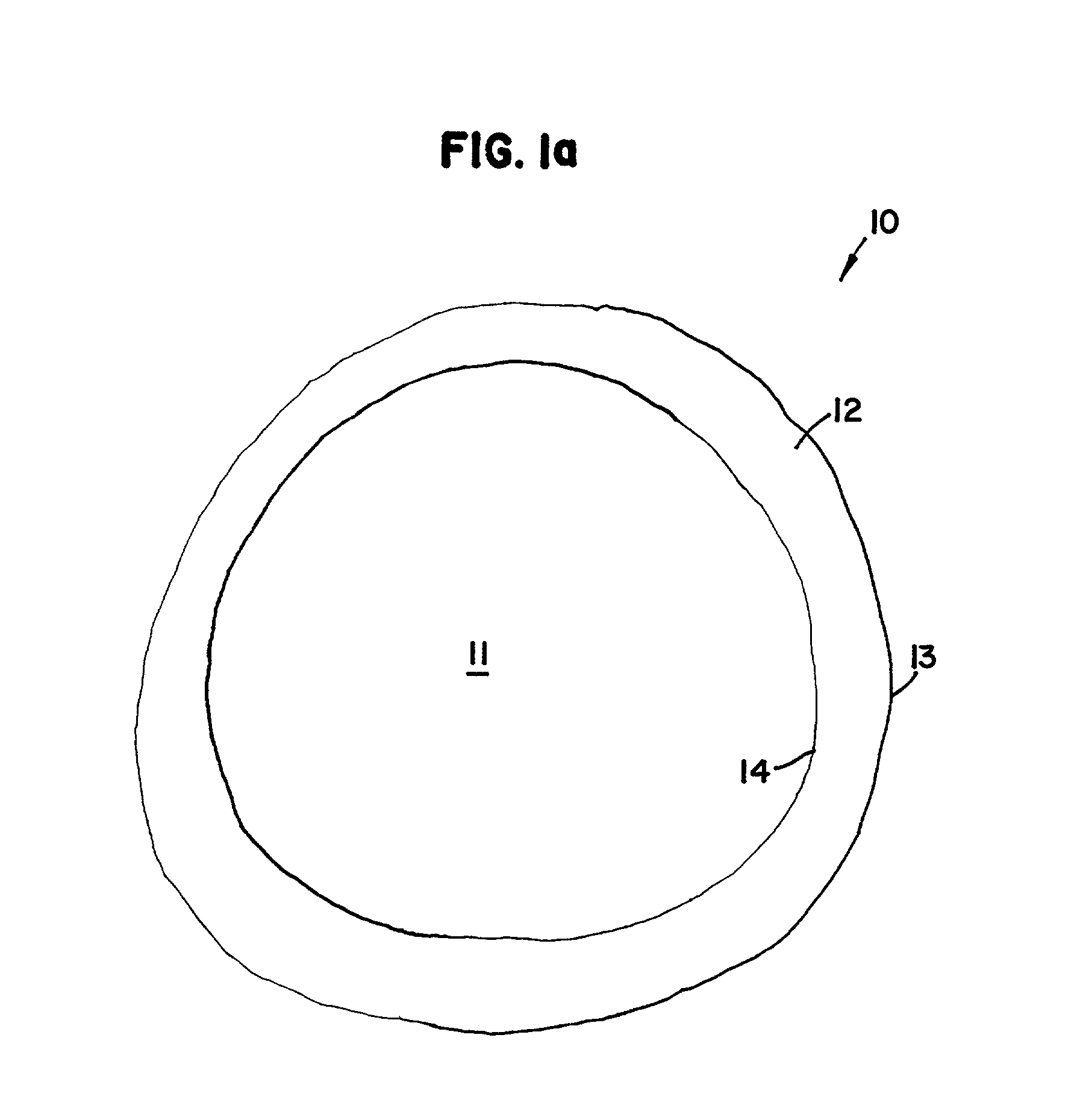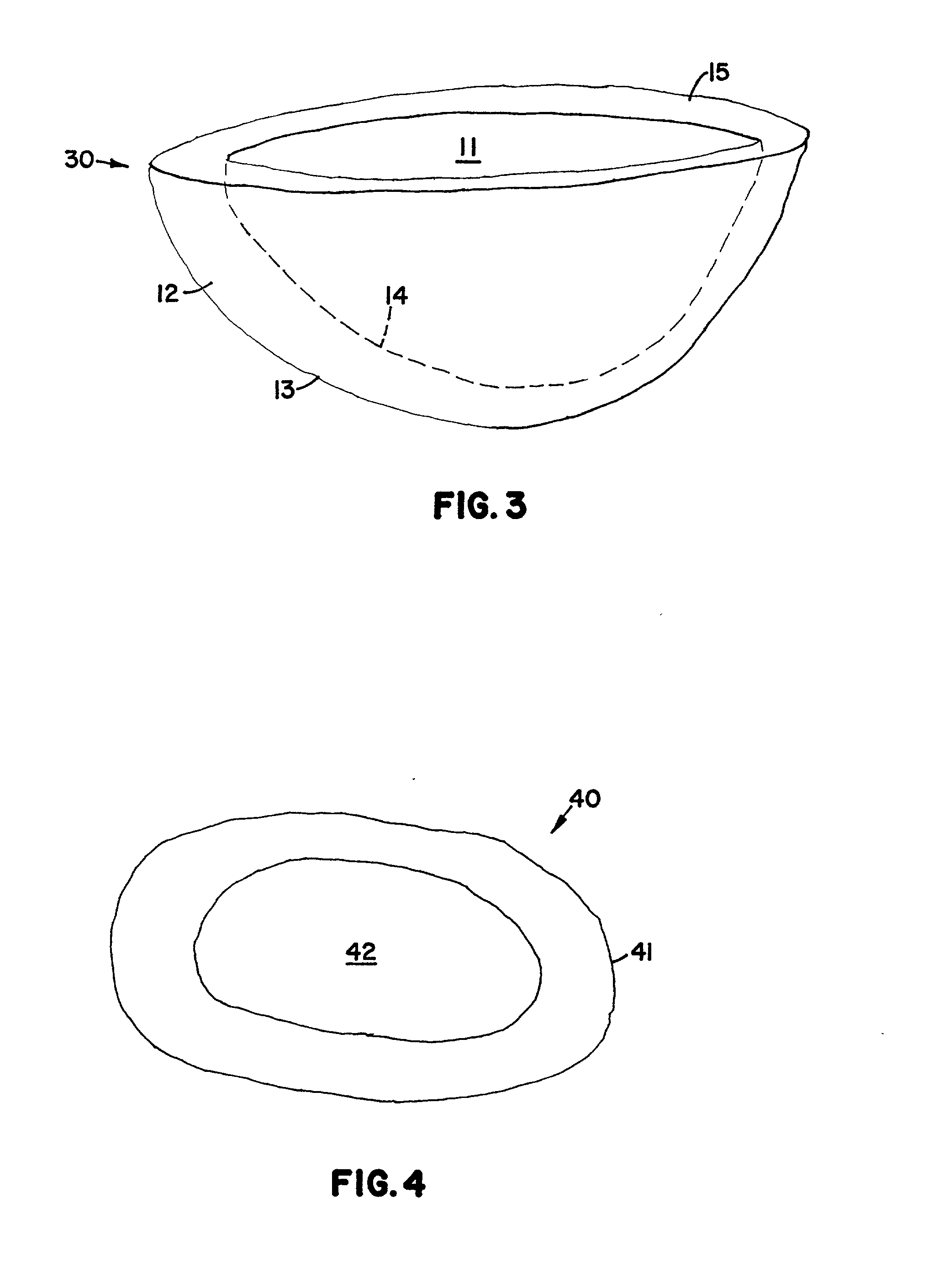Container comprising edible manifold
a container and edible technology, applied in the field of edible containers, can solve the problems of limited overall shape and size of products, and achieve the effects of low density, small mass, and good tas
- Summary
- Abstract
- Description
- Claims
- Application Information
AI Technical Summary
Benefits of technology
Problems solved by technology
Method used
Image
Examples
example 2
Chemical Leavening Method
[0067] 1. Pre-weigh ingredients.
2 Patent Flour 1300.0 g Salt 12.4 g Sugar 26.0 g Instant Dry Yeast 20.0 g Pastry Shortening 52.0 g Water 750.0 g
[0068] 2. Add ingredients into an 8 L stainless steel mixing bowl.
[0069] 3. Mix dough on low setting (100) for 2 minutes and medium setting (200) for 7 minutes in a Welbilt Varimixer (model W20A) with spiral mixing arm.
[0070] 4. Cut dough into 100 g samples (60 g-174 g).
[0071] 5. Round dough balls.
[0072] 6. Allow dough balls to rest for 5 minutes.
[0073] 7. Press dough into a thin sheet (about 6" diameter and .+-.2" thick).
[0074] 8. Shape dough sheet into shallow cup (about 2" diameter with 2" tall lips).
[0075] 9. Place thin layer of water around outer edge (to aid in sealing).
[0076] 10. Form slurry by mixing 3.0 g double action baking powder (DABP) and 3.0 g water.
[0077] 11. Add slurry into center of dough cup.
[0078] 12. Seal edges so no leaks occur.
[0079] 13. Optionally proof the dough balls for 0-45 minutes at 90.d...
example 3
Air Injection Method
[0083] 1. Pre-weigh ingredients.
3 Patent Flour 1300.0 g Salt 12.4 g Sugar 26.0 g Instant Dry Yeast 20.0 g Pastry Shortening 52.0 g Water 750.0 g
[0084] 2. Add ingredients into an 8 L stainless steel mixing bowl.
[0085] 3. Mix dough on low setting (100) for 2 minutes and medium setting (200) for 7 minutes in a Welbilt Varimixer (model W20A) with spiral mixing arm.
[0086] 4. Cut dough into 174 g samples.
[0087] 5. Round dough balls.
[0088] 6. Allow dough balls to rest for 5 minutes.
[0089] 7. Press dough into a thin sheet (about 6" diameter and 12" thick).
[0090] 8. Shape dough sheet into shallow cup (about 2" diameter with 2" tall lips).
[0091] 9. Insert a straw into center of cup. Wrap edges of dough tight around straw.
[0092] 10. Take a deep breath and blow air into the dough using the straw. Inflate to desired volume (about 6" diameter sphere).
[0093] 11. Remove straw and seal exit hole so no leaks occur.
[0094] 12. Place inflated dough balls on baking sheet.
[0095] 13. Ba...
example 4
Co-Extrusion Method
[0097] 1. Prepare Rheon KN400 encrusting machine by installing the 24 mm inner nozzle, 50 mm outer nozzle, and 4YD2 encrusting shutter. Remove all piping for the inner filling port and leave it open to the atmosphere.
[0098] 2. Pre-weigh ingredients.
4 Patent Flour 30.09 lb Salt 0.29 lb Sugar 0.60 lb Instant Dry Yeast 0.46 lb Pastry Shortening 1.20 lb Water 17.36 lb
[0099] 3. Add ingredients into an stainless steel mixing bowl.
[0100] 4. Mix dough on low setting for 200 sec and high setting for 600 see in a VMI SPI 120FE mixer with spiral mixing arm.
[0101] 5. Rest dough for 15 minutes.
[0102] 6. Add dough into the hopper on Rheon KN400 encrusting machine.
[0103] 7. Set Rheon controls to 40.0 / 0.0 / 3.0 / 20 (dough / filling / shutter / bel-t)
[0104] 8. Turn on the Rheon. The vane pump will fill with dough and it will start flowing through the outer nozzle.
[0105] 9. Hand dump 2.0 g of dry ice into the inner filling port. Time the addition to coincide with the encrusting shutter moti...
PUM
 Login to View More
Login to View More Abstract
Description
Claims
Application Information
 Login to View More
Login to View More - R&D
- Intellectual Property
- Life Sciences
- Materials
- Tech Scout
- Unparalleled Data Quality
- Higher Quality Content
- 60% Fewer Hallucinations
Browse by: Latest US Patents, China's latest patents, Technical Efficacy Thesaurus, Application Domain, Technology Topic, Popular Technical Reports.
© 2025 PatSnap. All rights reserved.Legal|Privacy policy|Modern Slavery Act Transparency Statement|Sitemap|About US| Contact US: help@patsnap.com



